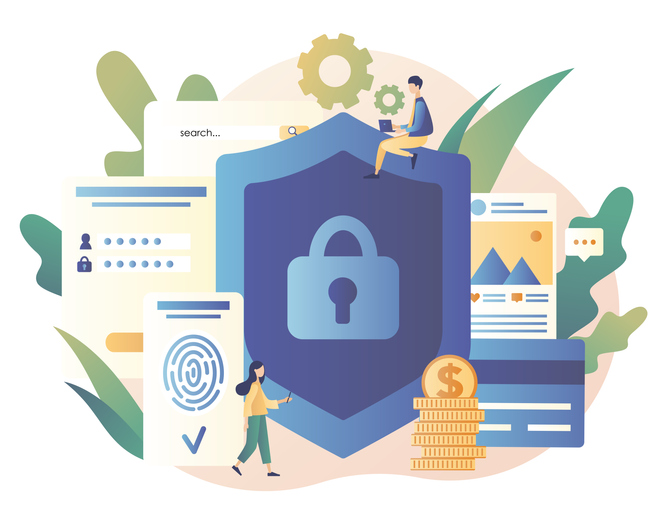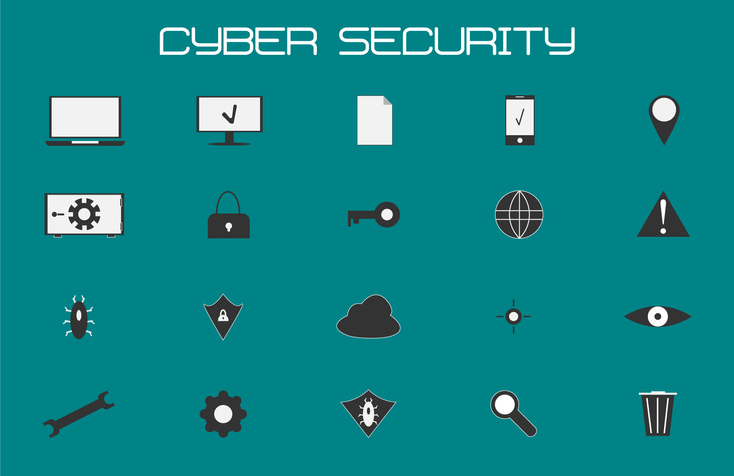Finding the Right Secure Video Platform for your Business
Online video is increasingly a major component of a business. Cord-cutting is hitting record-setting levels, as consumers follow suit. Whether for marketing, events or as a product itself, video is critical to modern businesses. Experts estimate that video will make up a full 76% of web traffic by 2020. Most of this video will be delivered via a secure online video platform.
In recent years, security firms are measuring an increase in piracy, hacking, and other digital attacks every year. In the U.S. alone, piracy costs $29.2 billion annually. A secure video platform provides a way to mitigate many of these risks.
This blog will focus on the most common threats to your video content, and how to protect against such threats. The security features provided by a secure online video platform will allow you to stream live video and host on-demand video content with more security and greater confidence.
7 Common Threats To Your Online Video, and How a Secure Video Platform Protects Against Them
In today’s increasingly digital world, there are many different types of common digital attacks. Piracy, hacking, and credential/credit card theft are a few of these. A secure video platform provides tools to help protect your content from these types of attacks. Depending on your needs, different methods will be best for you. To that end, we’ll cover a variety of methods below.
1. How to Quickly Launch and Share a Video Privately
Let’s say you need to get a private video online fast. For example, you need to share a draft with clients or your team. How can you share a secure video on a website?
Solution: Password Protection

The best streaming solution in this scenario is a password-protected stream or video. Once this protection is turned on, you can embed your video on any website. Users who visit that URL will be prompted to enter a password. If they enter the correct one, they will be able to watch the video normally.
Simple, easy, and secure.
2. How to Make Your Videos Play on Your Website Only
Some pirates and illegal streamers use the trick of copying video embed codes and putting live streaming videos on their own websites. This is relatively easy for any sophisticated pirate to do. So, how can you protect yourself against it?
Solution: Domain Restrictions
A secure video platform offers a feature called domain restrictions. This feature allows you to protect yourself against illicit video embedding. When enabled on a given video (or all your videos), a domain restriction allows you to “whitelist” allowed websites, or domains. In some cases, you can also “blacklist” known piracy domains.
This doesn’t stop pirates from copying your embed codes and putting them on their own website. However, when they try to playback the video, it won’t work. No video will arrive and they won’t be able to watch your content—period. In summary, domain restrictions are simple and easy to implement and provide a good layer of security.
3. How to Protect Customer Credit Card Information
Akamai has found that credential theft for online video subscriptions is a major issue. Millions of accounts are compromised every year. This can result in major problems for companies that are breached.
Solution: SSL/TLS Encryption

The solution to credential theft is SSL/TLS encryption. An SSL/TLS-encrypted web page loads as https://Dacast.com (note the “s” in HTTPS). That means your connection with the web page is encrypted. HTTPS is a bank-grade encryption protocol that is rock-solid and highly secure.
When you use SSL/TLS-protected connections for your customer pages, you ensure protection against hackers. Even if your customers are using shady open WiFi networks, SSL/TLS pages remain secure. It’s a general-purpose security measure that protects data in transit. And it is now the standard for all web sites. But too many websites still don’t use this security measure.
4. How to Stop Piracy
In the U.S. alone, piracy costs $29.2 billion annually. The number globally is even bigger. Unauthorized streaming and downloading of video content is a big problem. Between torrents, streaming boxes, and cams, pirates have a lot of tricks up their sleeves. But there are some methods we can use to fight back.
Solution: Secure Video Platform with AES Encryption
One of these methods is AES encryption. AES encryption protects your video content itself. Unlike HTTPS, it’s not about the communication channel in transit. It’s about the video itself. And viewers who don’t have the right encryption key will be unable to watch your videos.
For paying and otherwise authorized customers, AES video encryption is transparent. There is no additional user interaction required. It’s a simple on-off feature that makes your content more secure by preventing viewers from downloads and watching through any medium other than an embedded video player.
5. How to Block Piracy From Certain Geographic Regions
Every year, the Office of the United States Trade Representative (USTR) releases a list of countries most involved in online piracy. The 2019/20 list includes 36 countries where piracy is especially common, or where it is overlooked by authorities. The top countries include:

- Algeria
- Argentina
- Chile
- China
- India
- Indonesia
- Kuwait
- Russia
- Saudi Arabia
- Ukraine
- Venezuela
Many businesses only need to make their material available to users in certain geographic regions. You may even have an obligation to restrict content to certain regions due to licensing agreements. Geo-restrictions can help whenever you have bought the rights to display your content in only a specific country only (this is very common with ads, for instance), or if your schedule is different according to the countries.
Solution: Geo-Restrictions
The feature that allows you to deal with this issue is geographic restrictions. Geo-restrictions allow you to “whitelist” certain countries that are allowed to access your content, and “blacklist” others. Users in these countries will be filtered via their IP address, which corresponds to location. This isn’t a foolproof solution, as it can be bypassed with a VPN, but it does provide a significant level of protection for secure video platform users. Implementing geo-restrictions will stop the vast majority of regional piracy.
6. How to Ensure You Keep All Rights to Your Videos
Social video platforms like YouTube aren’t good for security. Downloading content is easy, for one. But another concern is that YouTube gains rights to any video you upload to their site. They can use your content for their advertising, etc.
Solution: Professional Secure Video Platform
The solution is to use a professional video platform. These secure video platforms retain all content rights for the original creator: you. Plus they provide a whole host of other advantages for businesses. To keep your content safe, you should also make sure you get the right license to deliver your video content. For instance, if you host a sports game, make sure you get the proper rights to do so.
7. How to Protect Yourself from DDoS and Other Hacking Attacks

So far, we’ve mostly talked about small-scale piracy and individual attacks. But there are bigger problems out there. What happens if you get attacked on a big scale, via your entire website and DDOS attacks. A DDOS (Distributed Denial of Service) attack is when a network of computers attack your website, using this to overwhelm your computer.
Solution: Using a CDN
The best way to bypass these problems is to use a CDN or a Content Delivery Network. A CDN is a global network of servers dedicated to distributing content like videos. CDNs use sophisticated load-balancing systems to direct local viewers to the servers closest to them. This has benefits for speed and reducing buffering. But CDNs also protect against DDOS and other types of large attacks. Plus, they enable you to scale to a massive audience.
Conclusion
At this point, you can begin to see how all these features complement one another. By implementing a range of these secure video platform features, you can create a high level of security. Given that the costs of cybercrime could reach $6 trillion by the year 2021, it’s important to take action to protect your content.
If you’re looking for a secure online video platform, you should consider Dacast. We offer all the features discussed in this article and more. Plus, we offer an advanced video hosting platform that includes some additional security features, such as AES encryption. We also offer a 14-day free trial, with no credit card required. You can set up an account and start streaming live in a matter of minutes!
 Stream
Stream Connect
Connect Manage
Manage Measure
Measure Events
Events Business
Business Organizations
Organizations Entertainment and Media
Entertainment and Media API
API Tools
Tools Learning Center
Learning Center Support
Support Support Articles
Support Articles